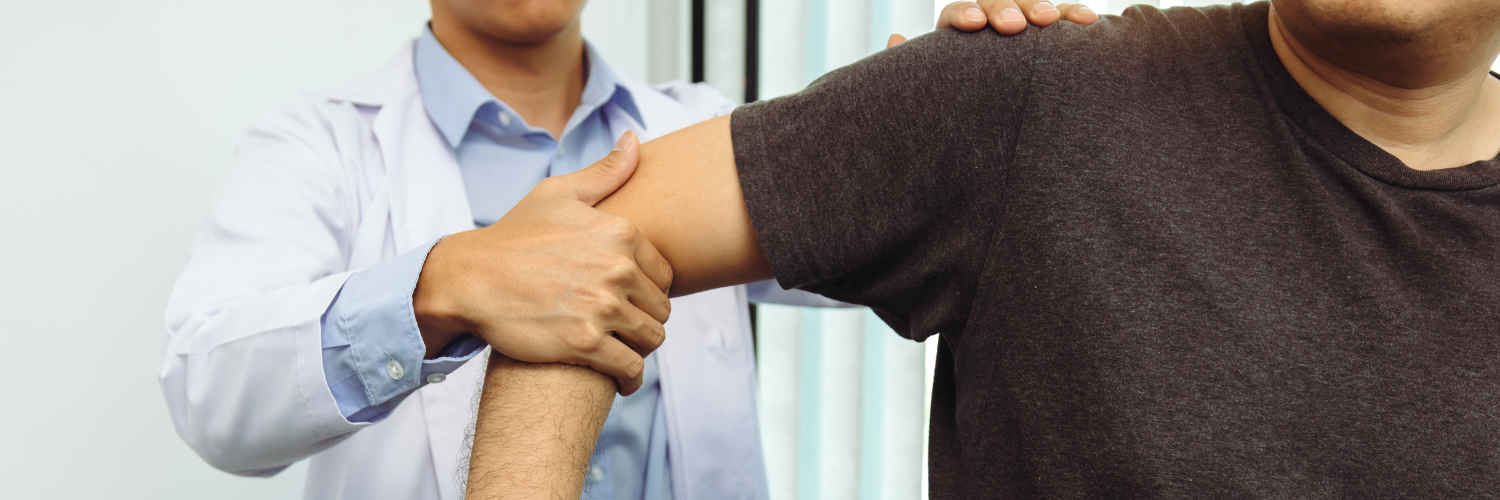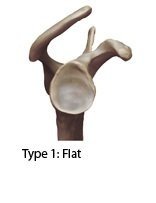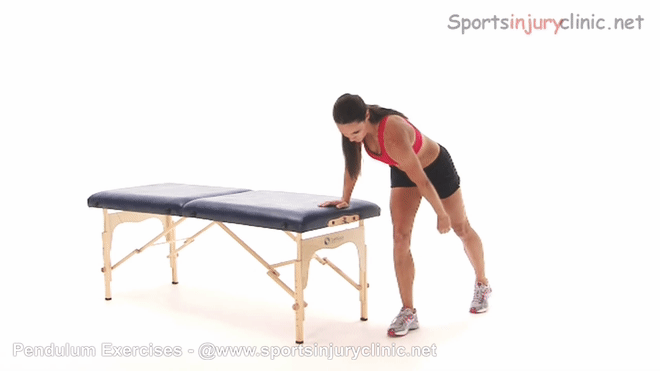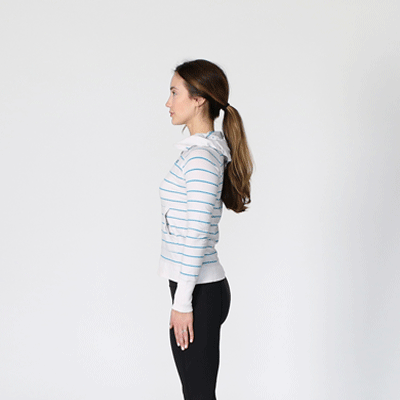Dealing With Acromion Pain With The Best Exercises For Relief
The shoulder is an incredibly versatile part of the body as it is both strong and flexible, enabling the arm to complete a wide range of activities like swimming, climbing, and working. As a result, the shoulder is a complex nexus of muscles, ligaments, and soft tissue that supports this movement.
One of these important structures is the acromion process of the scapula (shoulder blade). As this small structure has such a big role in the shoulder, it can become a site of pain and dysfunction. When acromion pain occurs, there are ways to identify and treat this to get the best outcome.
Keep reading to learn more about the acromion, the causes of the pain, and the best exercises for pain relief.
Acromion Anatomy
The acromion is a small bony continuation of the scapula that protrudes at the outside edge of the shoulder. It meets with the clavicle to form the acromioclavicular joint, which is largely responsible for the wide range of motion in the shoulder.
From the acromion, there are many muscles and ligaments that attach including the mid-portion of the deltoids, the trapezius muscle, the acromioclavicular ligament, and the coracoacromial ligament. The subacromial bursa sits under the acromion, reducing friction between the acromion and rotator cuff muscles that pass below it.
There are three acromion types, which have different morphology and therefore a different correlation to shoulder injuries:
Type 1 Acromion
A type 1 acromion is flat and is correlated with a 3% risk of rotator cuff tear.
Type 2 Acromion
A type 2 acromion is curved and is correlated with a 24% risk of rotator cuff tear.
Type 3 Acromion
A type 3 acromion is hooked and is correlated with a 70% risk of rotator cuff tear (the highest risk of all three).
How To Find The Acromion Process:
The acromion process can be easily palpated as it sits at the outer and upper most bony part of the shoulder. To locate it, simply palpate the lateral (outside) edge of the shoulder – the acromion bone will usually feel like a small, flat structure. A picture or diagram can be helpful with this process.
Why Does The Acromion Hurt When Pressed?
As the acromion has such an important role in the shoulder, it is commonly a site for pain. The acromion can hurt when pressed for several reasons:
Rotator Cuff Tear
Repetitive activity or trauma can cause the rotator cuff to tear. The rotator cuff muscles include the supraspinatus, infraspinatus, subscapularis, and teres minor, which help control the movement in the shoulder. As the tendon for the supraspinatus muscle passes through the narrow, tight space beneath the acromion, it can be easily compressed or torn, resulting in pain near the acromion.
Shoulder Impingement
In cases where the subacromial space becomes smaller or narrower, from conditions like osteoarthritis, shoulder dysfunction, or swelling, it can compress the structures that travel through it. When these structures are compressed, it can cause pain near the acromion.
Injury
Acromioclavicular injuries are one of the most common injuries in the shoulder region, occurring in approximately 40% injuries related to the shoulder. This may occur from direct sporting contact or falling onto the arm or shoulder, resulting in acromion pain.
Bursitis
The subacromial bursa is a fluid-filled sac, and has an important role reducing the friction between the tendons and acromion and therefore helping the shoulder muscles to move freely. However, when the bursa becomes irritated or inflamed, it can lead to bursitis. Bursitis can cause pain around the acromion when pressed.
Adhesive capsulitis
More commonly known as frozen shoulder, adhesive capsulitis is a term for the characteristic stiffness and thickening of the soft tissue in the shoulder with this condition. The cause is often unknown, but adhesive capsulitis can result in reduced range of motion and pain near the acromion.
Other Rare Causes Of Acromion Pain:
Other less common causes of acromion pain include trauma, infection, tumour, fracture, joint dislocation, referred pain, and more.
Acromion pain can also present in a similar way to other causes of pain. For this reason, it is always important to seek medical attention if the symptoms are severe, serious, or unexplained. An accurate diagnosis is critical before any treatment begins to avoid symptoms worsening.
Signs And Symptoms Of Acromion Pain
The signs and symptoms of acromion pain can include:
Pain on or around the acromion process
A dull, sharp, or throbbing pain
Shoulder stiffness
A feeling of tightness in the shoulder
Reduced range of motion
Pain when lifting the arm
Pain when lying on the affected side
Difficulty completing everyday activities, such as reaching or dressing
Treatment Options For Acromion Pain
The goal of treating acromion pain is to restore shoulder movement and alleviate pain. This can involve several methods, including:
Rest
A period of rest can be helpful to manage symptoms and begin the healing process.
Physiotherapy
Physiotherapists have detailed knowledge of the shoulder and causes of acromion pain. They can identify the cause of the pain and recommend different treatments, with common treatment strategies including exercise, manual therapy, and education.
Ice therapy
Ice can be applied to the area to provide short-term relief for any symptoms of acromion pain.
Medication
Over-the-counter pain relief can be useful to manage symptoms, particularly pain during certain activities or physiotherapy. In some cases, a doctor may prescribe anti-inflammatories or other medications for stronger symptoms.
Surgery
Surgery is usually reserved as a last-line treatment, with the exception of trauma or when the urgent medical input is required. In most cases, surgery is only considered for cases of acromion pain that have not responded to conservative treatments. A doctor will usually make a referral to a surgeon for an opinion to determine if surgery will help resolve the pain and restore movement.
The Best Exercises For Acromion Pain Relief
Exercise plays an important role in relieving acromion pain. A physiotherapist will outline the exercise dosage, depending on the cause, location, and severity of the pain. Some common exercises from a physiotherapist may include:
Pendular exercises
Pendular exercises are a gentle form of a range of motion.
For this exercise: Start by leaning on a wall or bench with the unaffected arm, letting the affected arm hang towards the floor with gravity. The body is swayed slowly clockwise, forwards, backwards, and side-side to initiate arm mobility passively.
External rotation
External rotation is commonly limited when there is pain in the acromion.
For this exercise: Start with both your arms bent at 90 degrees, palm facing upwards with a rolled-up towel between the elbow and torso. Keeping the body straight, rotate your arms outward. For an advanced version, use a light-resistant band.
Scapula Retractions
Scapula retractions can help build up the muscle in the shoulder region in the early stages of recovery.
For this exercise: You can start in sitting or standing. Then, gently squeeze their shoulder blades together to activate the posterior shoulder muscles.
Next Steps
Pain doesn’t have to be a part of everyday life. With the right help and approach, it is possible to recover from acromion pain. For the best results, seek out the advice of a physiotherapist for a tailored exercise program and more information about acromion pain.
Always seek professional medical guidance before starting any new exercises or treatment programs.





















